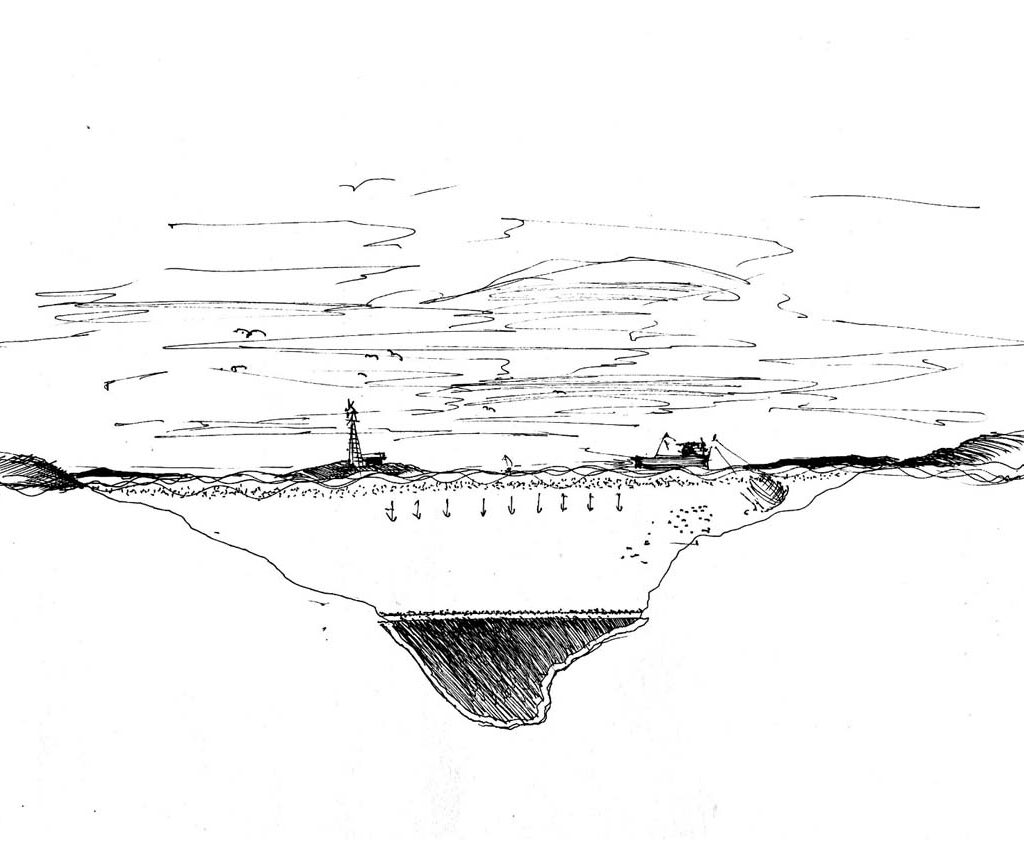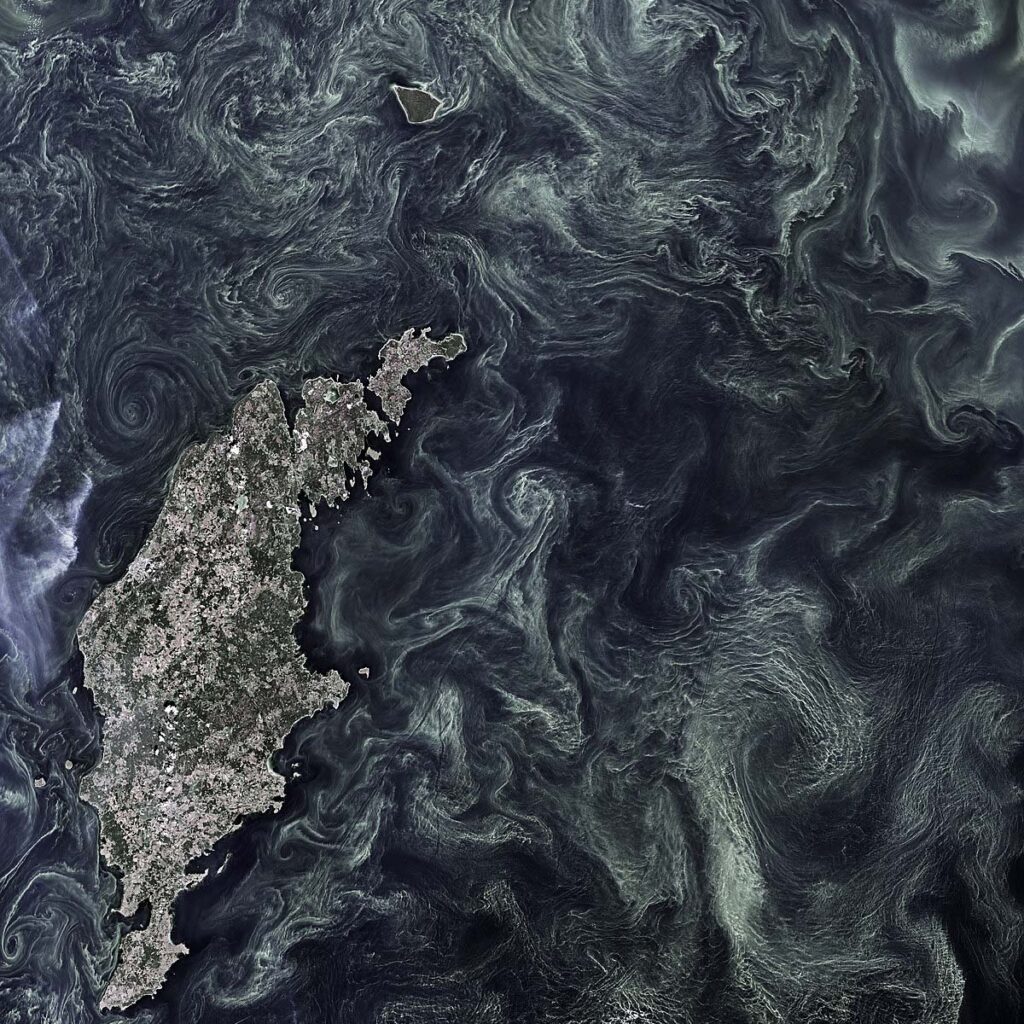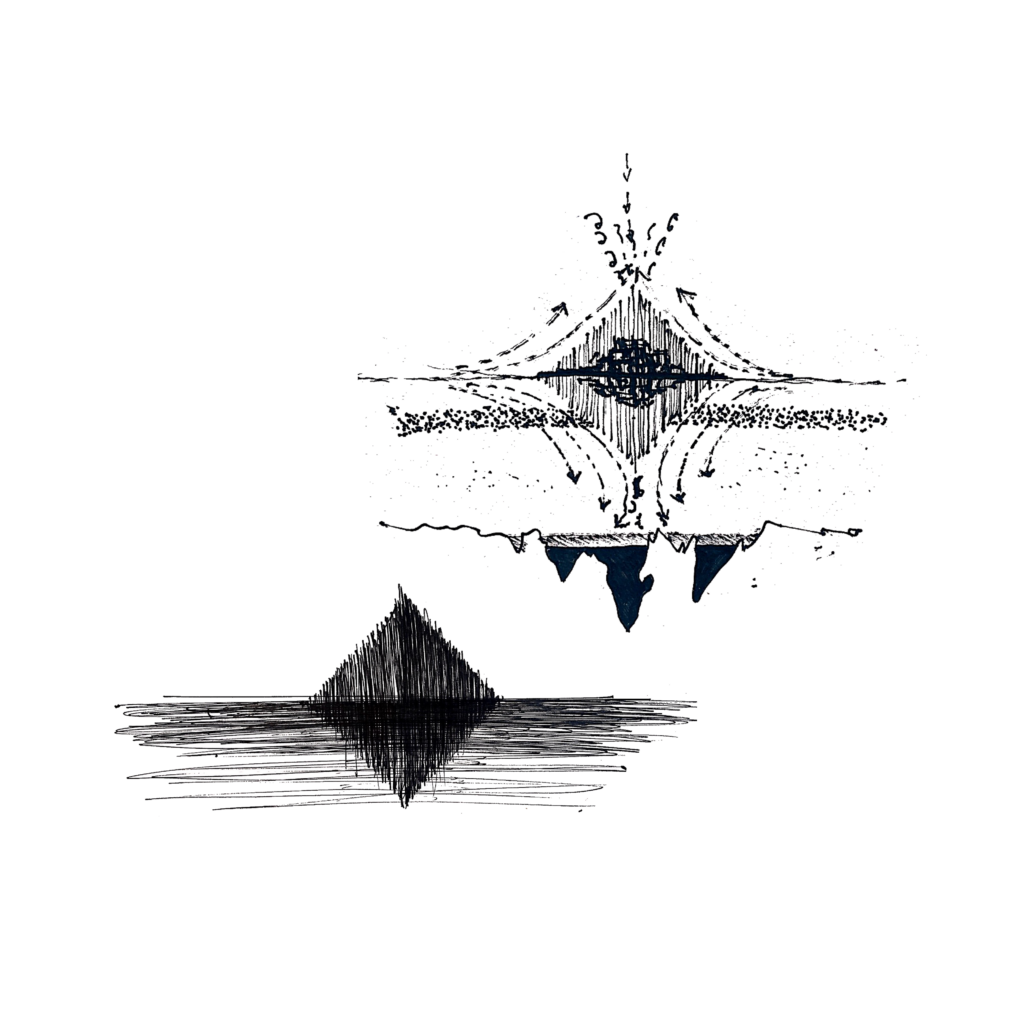Attack Architecture – Design beyond the built
Introduction
Since the early 1900s the oxygen levels in the baltic sea have been decreasing in the deep-water due to nutrients from infrastructure, housing and farming. The result is a rapid increase of algae blooms in the surface water, leading to the Baltic Sea dying at a pace faster than ever before. The dead zones of the ocean, the ”Hypoxia”, are now reproducing by themselves and our efforts of reducing the pollution is no longer sufficient enough to reverse the trend. We need to work proactively with the issue instead of simply trying to recover our mistakes.
By breaking the layers in the brackish water with pumps, the oxygenated top layer of water can be relocated to the suffocated bottom layer, activating the sediment and giving nature a chance to break down the algae and eventually heal itself.
This project shows an example of how it is possible to revive the anoxic deep water basins, making it possible for sealife to strengthen and enable a cultural coastal life in the future. The design is based on an understanding of the site with the aim of showing how architectural design can be used to push sustainable inventions further.
Research question – How can design drive sustainable inventions further and be the driving force for change?






